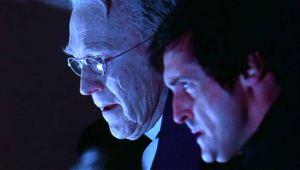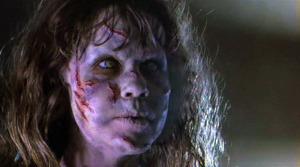Chances our whenever a large group of people are polled over the question “What is the scariest movie of all-time?” there is no doubt that in the runner-up column you will see titles like; The Shining, House on Haunted Hill, or Psycho. But inevitably the single film that is chosen as the single most frightening picture is, The Exorcist. Directed by William Friedkin and based off of the popular novel by William Peter Blatty; it tells the tale of a troubled priest confronting a creature of pure evil that has taken up residence within the body of a little girl. The film broke through the usual Hollywood snobbery when it comes to the genre to receive numerous awards and accolades and even landing two Oscar wins and many other nominations. Naturally it inspired so many imitators that everyone is no doubt familiar with all the hallmarks of exorcisms. But few know that the true terror of this movie lies with the fact that the tale was inspired by actual event. In fact the tale of a real child in Washington DC inspired Blatty to pen his own tale of terror which would spawn one of the most influential and important films of all time. With our modern knowledge of mental illness and such it is easy to come to a logical conclusion to many cases of alleged possession, but this was not always the case in fact for many people this is a very recent development. And even with the knowledge we now hold many alleged cases of possession still puzzle experts and fall into the realm of the paranormal. Much like the field of demon possession and exorcisms, much of what happened to a young boy known only by the alias, Roland Doe remains a mystery.

No doubt everyone who saw the Exorcist knows the exact moment when it became abundantly clear that young Reagan McNeil’s 
Local clergy from the Catholic Church were called in to investigate the claims that something was wrong with Doe, when every traditional avenue to find a solution had been exhausted. Rather than a brooding priest struggling with his faith such as Father Karras, instead they turned to Father Edward Albert Hughes. Hughes suffered abuse at the hand of whatever was troubling the boy, both physically by an unseen force as well as verbally in Doe’s new found tongue of Latin. It was determined that Roland Doe was indeed possessed by a demon. Hughes had the boy moved to a hospital where he and other priests could perform an exorcism. Those of you hoping for a the imagery of a cold and dark single night full of intensity, will be sadly disappointed to hear the event took place over several weeks in the spring. Eventually it was discovered that one of the priests present even kept a journal of the process which was eventually published, but not by Blatty.
Afterwards as word spread through the DC-area, young author William Peter Blatty became inspired and penned his now famous novel which left an imprint on film and pop culture. Despite dramatic flourishes many in the priesthood consider the details within the novel to be frighteningly accurate to what occurs when an exorcism is performed.

